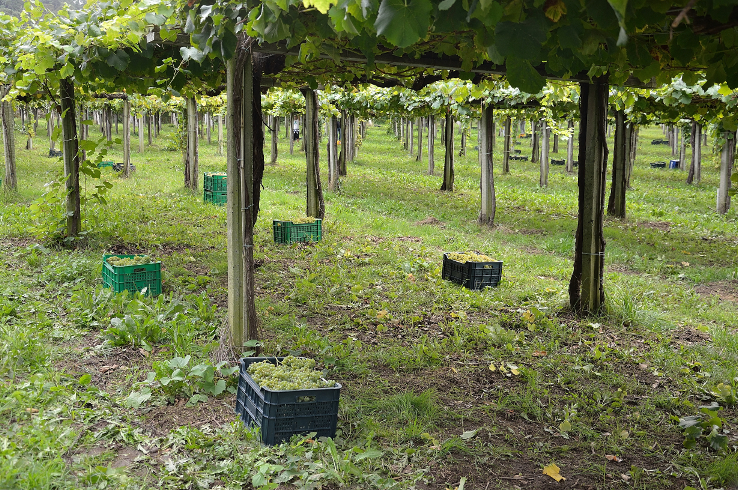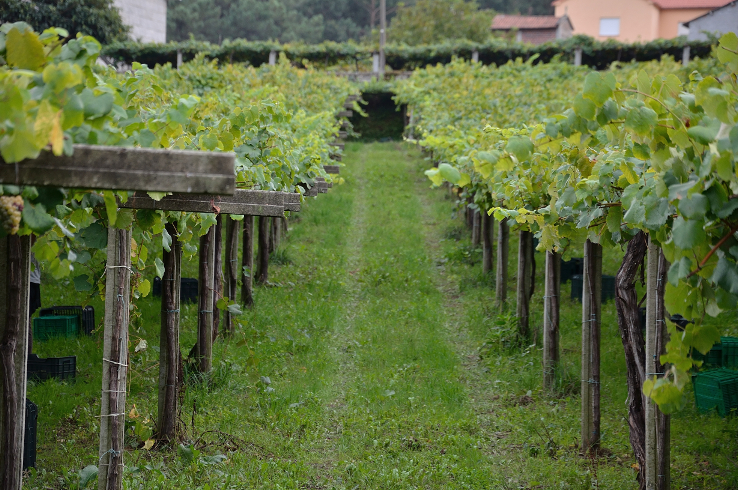2020 Viña Cartin Rías Baixas Albariño
Quintessential is the only word I can use to describe this wine. It comes from the ancestral home of Albariño, located directly on Spain’s Atlantic coast. It’s bright and refreshing… a solid weeknight staple.
Sustainable farming practices and hand-harvested.
- Tasting Notes Meyer lemon, clementine, citrus pith, honeydew, white grapefruit, marcona almond, sea salt
- Variety Albariño
- Region Spain, Rias Baixas
- Volume 750ml
- Alcohol Volume 13%
- Table Talk This wine comes from Val do Salnés, which many call the birthplace of Albariño.
$24.00
Out of stock
Viña Cartín was founded in 1977 in Spain’s Salnés Valley, the oldest of Rias Baixas’ five subregions. In 2003, Viña Cartín moved their operations to a new location—an old winery in the heart of the area—and refurbished its interior with modern technology, yet maintained the estate’s artisanal character.
Contrary to the many regional wineries who purchase fruit, Viña Cartin proudly owns and sustainably farms 50 acres of their own vines. This direct access to the source allows them to control the raw material from start to finish. The estate’s vines average 30 years in age and benefit from the influence of the nearby Atlantic ocean. The resulting wines are bright, balanced, and laden with natural acidity.
ALBARINO
A pleasantly refreshing light white wine. Most known from Rias Baixas in Spain, but additionally as Vinho Verde in Portugal. Albariño’s are generally high in acid with refreshing citrus fruit flavors and a notably saline mineral character due to the regions’ proximity to the ocean. Serve these wines well-chilled while eating fish tacos on a hot summer day, you won’t be disappointed.
GALICIA, SPAIN
Part of what can be referred to as “Green” Spain, Galicia is located in the upper north west corner of the country. Wine production here dates back to the time of the Romans. It is one of the coolest areas producing refreshingly crisp Albariño with strong mineral characteristics as well as elegant red wine from the Mencía grape. Galicia boasts five denominated wine regions (DOs) including the infamous Rías Baixas, the closest DO to the Atlantic ocean.
Related Items
-
New Arrival
2024 Argaux Santa Barbara County Grenache Rosé
$30.00When we created this rosé, we want something light, refreshing, and crisp — a wine that can quench our thirst on a warm afternoon yet offer enough complexity to carry us through a meal. This wine delivers exactly that. It’s high quality without taking itself too seriously, and it’s the kind of bottle we want to drink every day — otherwise, we wouldn’t have made it.
Sustainable farming practices, no herbicides/pesticides, and less than 400 bottles produced.
-
2022 Peay Pinot Noir ‘Savoy Vineyard’ Anderson Valley
$95.00Savoy Vineyard in the Anderson Valley is considered one of the best vineyards in all of California for Pinot Noir. It’s highly-regarded for producing classic Pinot Noir with a touch of influence from the Pacific Northwest. Think California fruit mixed with Oregon’s rustic concentration.
Organic farming practices, woman-winemaker.
-
2021 Tenuta di Castellaro ‘Ypsilon’ Terre Siciliane Rosso
$28.00Born from the volcanic soils of Lipari Island, Ypsilon is a red blend that is shaped by the island’s sun-drenched days and cool, breezy nights. It is a blend of Corinto Nero, Nero d’Avola, and Alicante grapes cultivated as bush vines on the Castellaro plain, 350 meters above the Aeolian sea. It’s a true island wine, a taste of the wild, untamed beauty just north of Sicily.
Organic farming practices, hand-harvested, native yeast fermentation, no fining, vegan.
-
2023 Punta Crena Vermentino Riviera Ligure di Ponente ‘Vigneto Isasco’
$35.00For over 5 centuries, the Ruffino family has nurtured these vines that cling to the cliffs above the Ligurian Sea. Nicknamed “The Yachtsman’s White,” Vermentino is beloved for its breezy salinity, citrus lift, and mouthwatering freshness. It’s a vivid expression of the Riviera—sun-soaked, sea-sprayed, and utterly transportive.
Organic farming practices, hand-harvested, family-owned and less than 2,000 cases produced annually.










